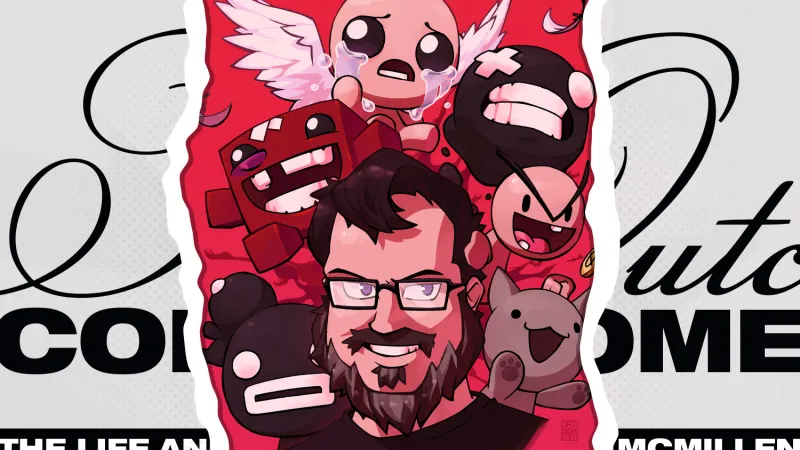
Over the last two decades, Edmund McMillen has made a name for himself in the game industry as one of the preeminent hitmakers in the independent development scene. Whether you're talking about his early days churning out cult-classic games with Adobe Flash or his mainstream success with titles like Super Meat Boy and The Binding of Isaac, McMillen is one of the greatest success stories to come out of the millennium’s early indie boom. And yet, through all this success, McMillen has felt like an outcast.
We sat down with McMillen for an extended conversation to learn about the unique path the artist and designer took to become one of the most successful independent game developers of this era.
New Paths to Newgrounds
McMillen has long felt like he doesn’t belong. Hailing from Watsonville in Santa Cruz County, California, McMillen mostly grew up with his grandmother. His mom’s side of the family, including his grandmother, consisted of devout Catholics, while members of his dad's side were what he called “A.A. Christians,” or born-again Christians recovering from addiction.
“I didn’t fit in really anywhere in my family,” says McMillen. “I just felt like a giant weirdo. The closest thing to me was my grandma. Nobody else really had any interest in art. My dad sang in a Journey cover band, but other than singers, there weren’t artists, illustrators, or creative types.”
To this day, McMillen is a massive fan of music, even calling it a bigger inspiration on him than other media. As he sports a Nine Inch Nails t-shirt, he rattles off his favorite bands, including The Smashing Pumpkins and The Breeders. McMillen says he found himself drawn to the level of independence musicians have when crafting their art and the way they can express themselves.
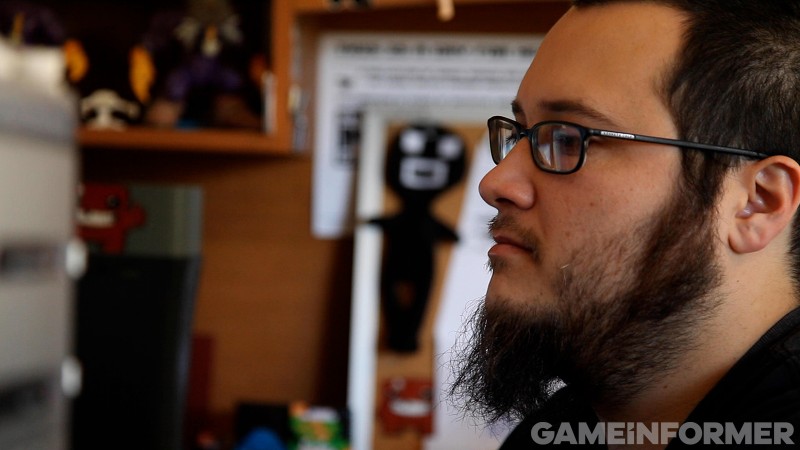
“That was the thing I always strived for as an artist: the idea that this small group of people could sit down and do and write whatever the f--- they wanted, and then thousands of people would hear it and could enjoy it was just so cool to me,” he says. “That’s what I wanted primarily – the same thing for animation and anything that I was doing. I wanted my voice to be heard so desperately.”
McMillen floated through high school, feeling like he didn't fit in there either. However, he loved drawing, so he started self-publishing comics. Following a rejection letter from an indie comic publisher, McMillen had a fire lit under him. “It was one of those failures that motivated me heavily,” he says. “Not only did I want to show them up, and show them what they missed, but also, I got real and was like, ‘Okay, if I want to continue doing this, I can’t just keep printing 50 comics at Kinko’s and selling them at Streetlight [Records in Santa Cruz].’”
This led him to begin taking classes at a community college to learn web design to create a website to showcase his comics to a broader audience. He transitioned to putting his work online, with Flash becoming his weapon of choice thanks to its popularity as a web tool at the time. Shortly after, McMillen discovered Newgrounds.com, which hosts user-created games, movies, and other content.
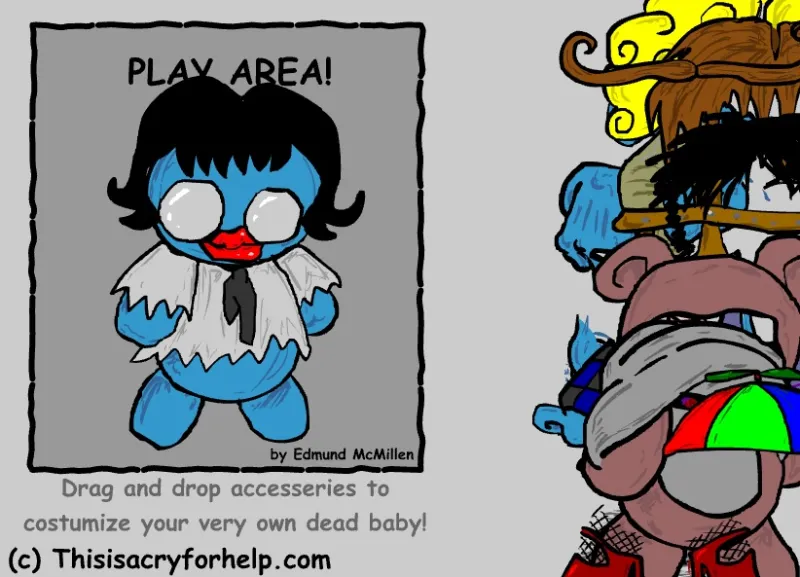 Dead Baby Dressup!
Dead Baby Dressup!
His first taste of success as a game developer came with Dead Baby Dressup!, a series of interactive Flash games based on his comics. He bought a domain for his comic series, This is a Cry for Help, and began experimenting more with Flash and implementing interactive elements.
“I didn’t choose games; games chose me,” he says, laughing. “I wanted to make comics. The thing is, even on Newgrounds, my animations didn’t do that well; it was my games that did well.”
His work eventually caught the eye of Tom Fulp, founder of Newgrounds. “He promoted my work pretty heavily and showed me the way,” McMillen says. “I didn’t know I was making games, even when I was making Flash games back then. There wasn’t even a category for games yet. They were just considered Flash animations that have interactivity to them.”
McMillen and Fulp began working on a game McMillen designed, but Fulp had to stop working on it to focus on another game called Alien Hominid. Fulp had grander ambitions for Alien Hominid than publishing it on Newgrounds; he wanted to bring the game to consoles. McMillen couldn't wrap his head around the idea of getting a game made in Flash to consoles, but Fulp had his mind set on it.
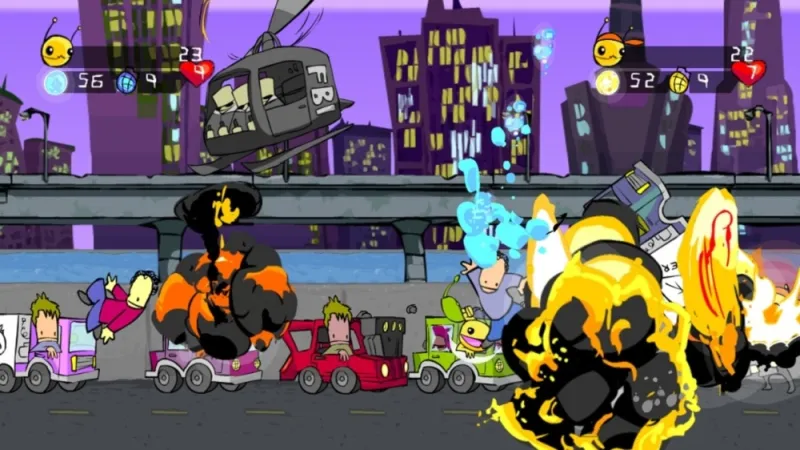 Fulp's Alien Hominid HD for Xbox Live Arcade
Fulp's Alien Hominid HD for Xbox Live Arcade
To accomplish this, Fulp co-founded a studio called The Behemoth. McMillen’s collaboration with Fulp on that project fell through, but the success Fulp and The Behemoth experienced with Alien Hominid and Castle Crashers served as early showcases for what indie games could accomplish in the home console market.
McMillen still didn’t feel like he entirely fit in despite the attention and audience he found online through sites like Newgrounds. Instead, he felt somewhat of a rivalry with other creators on the site, which drove him to become better at his craft. Over his first decade in development, McMillen created nearly 40 games, some of which were collaborations with other programmers within that same community. But, like Fulp, McMillen was thinking beyond Newgrounds.
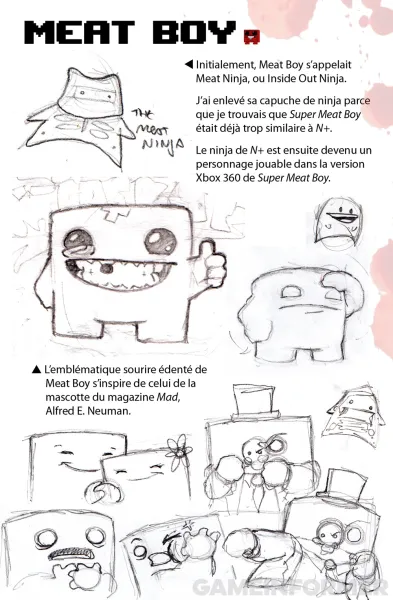
Carnivorous Console Conception
In the late 2000s, McMillen compiled what he refers to as a portfolio of sorts, containing all of his games, comics, and animations on one disc, which he, alongside his wife Danielle, sold out of their house. He saw what his fellow indie devs achieved through the newly established Xbox Live Arcade and wanted in on the gold rush. “Suddenly, my peers were becoming millionaires, and they were having these options for their futures, and I would really like the same,” he says.
One day, McMillen received an email from then-Epic Games designer Cliff Bleszinski telling him he bought his disc and liked what he saw. McMillen viewed this as his chance to get his foot in the door with the console market, and upon request, Bleszinski gave him contacts at Microsoft and Nintendo.
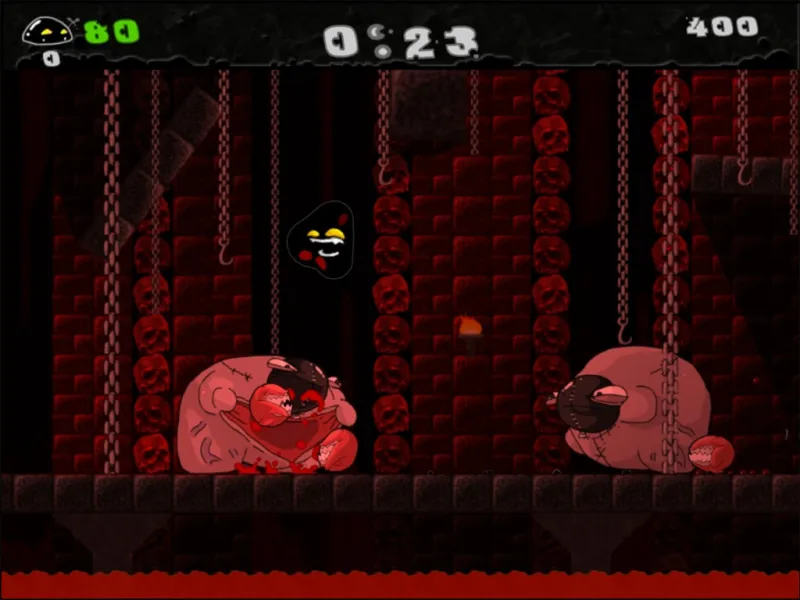 Gish
Gish
After sending emails to both, McMillen received an enthusiastic response from the Xbox Live Arcade team. McMillen initially pitched them on a remake of one of his most successful games: Gish. McMillen reached out to original Gish co-designer Alex Austin and Tommy Refenes, another programmer he met through Newgrounds, to work on the XBLA version.
However, as the Gish project began, things quickly headed in the wrong direction, and development halted, with McMillen departing the team. Despite this, McMillen knew this was his big chance, and he couldn’t just walk away from the opportunity, so he began looking at what his most successful recent Flash games were. The one that stuck out to him was a 2D platforming game called Meat Boy.
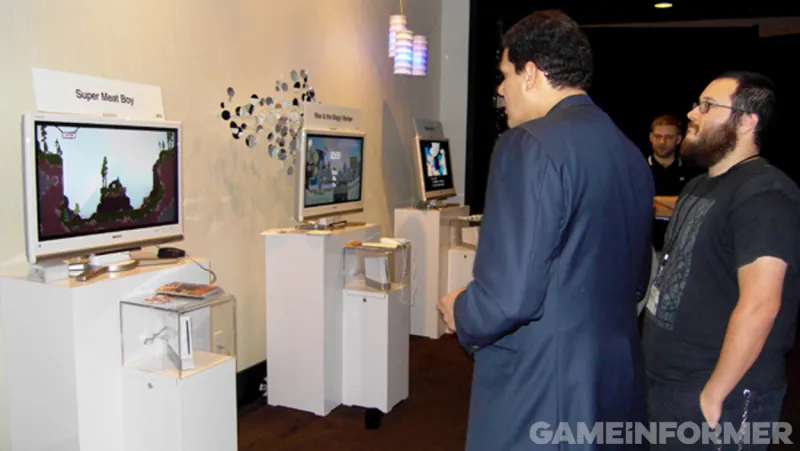 McMillen showing then-Nintendo of America president Reggie Fils-Aimé a demo of Super Meat Boy
McMillen showing then-Nintendo of America president Reggie Fils-Aimé a demo of Super Meat Boy
“It had eclipsed all of my other games as far as views go, and it was the most mainstream-appealing game on the internet that I had done,” McMillen says. “It was the most simplistic as well; it was a platformer, so it didn’t even involve physics. It was just straightforward.”
McMillen pitched a Meat Boy port to the Xbox Live Arcade team and asked Refenes to program it. When all parties agreed to it and development started, Super Meat Boy was born. As release neared in 2010, Microsoft informed McMillen and Refenes, or Team Meat as they’d become known, that the sales projections for Super Meat Boy were low thanks to it being a 2D game. Despite this notion, Super Meat Boy was bolstered by strong reviews and Team Meat’s grassroots promotional efforts.
